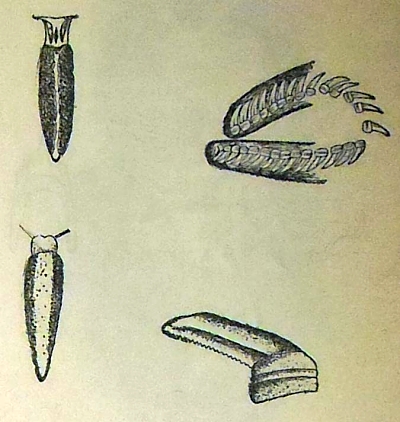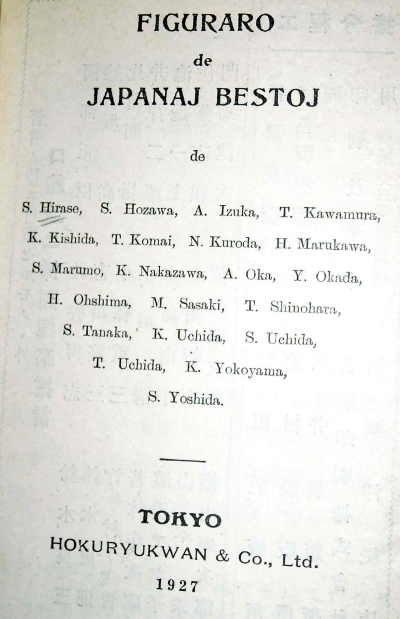Re: Identification of an Elysia from Hong Kong
January 23, 2009
From: Cynthia D. Trowbridge


Concerning message #13429:
Dear Bill,
I was fascinated to discover about Elysia hirasei from your messages in 2005. Almost 4 years later and I have finally located the original description of this species (as Elysia viridis ) by Hirase (1927).
I presume that the copyright has expired on this so am sending a digital photo of the the radular teeth of E. hirasei as drawn by Hirase (1927). To my knowledge, Baba never illustrated the teeth. They are heavily serrated and blade shaped.
Here is the reference:
-
Hirase, S. et. al (1927) Figuraro de Japanaj Bestoj. Hokuryukwan & Co., Ltd. Tokyo. p. 1476
All the best,
Cordially,
Cynthia
sacoglossans@ymail.com
Trowbridge, C.D., 2009 (Jan 23) Re: Identification of an Elysia from Hong Kong. [Message in] Sea Slug Forum. Australian Museum, Sydney. Available from http://www.seaslugforum.net/find/22184Dear Cynthia,
Thanks very much for passing this on. Following old references can open a can of worms! I am not sure just what status Hirase's description has in nomenclature. Although Baba (1949) refers to Hirase (1927) I think what Baba describes in 1949 is as far back as we can go in nomenclatural terms. Both Hirase (1927) and Baba (1949) identify the animal [incorrectly] as Elysia viridis Montagu.
In Baba (1955) where he gives the species a new name - E. hirasei - he makes it clear that not all the illustrations identified as E. viridis in 1949 are his new species E. hirasei. He specifically lists a colour painting Plate VIII fig 25 (non fig 26) and a Text Fig 24 as representing E. hirasei Baba n.n.
It has the characteristic black markings on the 'neck' as illustrated on the Fact Sheet, but on looking at his Text Fig 24 of the radula with my naked eye the teeth appear non-denticulate, although fine denticulations are described in the text. Your copy of Hirase's made me curious so I examined Baba's illustration with a magnifying glass and sure enough there are very fine denticulations visible. I must say it's a bit of a trap when you need to read a book with a microscope!
Fortunately Baba specifically excludes Plate VIII fig 26 which shows a species with a blue tip to the tail and blue tips to the rhinophores which places it right in the middle of the E. abei - E. amakusana confusion.
Thanks for these illustrations Cynthia. It is nice to be able to identify one of these Elysia species with confidence.
Best wishes,
Bill Rudman
Related messages
-
South African Elysia
From: Richard Barnes, April 8, 2010 -
Re: Elysia hirasei? from Ratnagiri
From: Vishal Bhave, November 4, 2009 -
Re: Elysia hirasei? from India
From: Vishal Bhave, November 3, 2009 -
Re: Identification of an Elysia from Hong Kong
From: Kathe R. Jensen, April 14, 2005 -
Identification of an Elysia from Hong Kong
From: Allen To, February 5, 2005
